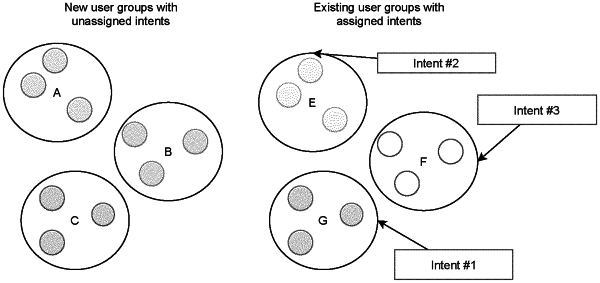| CPC G06F 9/451 (2018.02) [G06F 11/3438 (2013.01)] | 16 Claims |

|
1. A method comprising:
collecting usage data from a computing device and a graphical user interface, the usage data generated by users of the computing device and the graphical user interface;
grouping, by using a grouping machine learning model, each of the users into similar user groups based on a data representation, the data representation representing the usage data of the users and the similar user groups;
determining a similarity score between the similar user groups and existing user groups, the existing user groups previously grouped and assigned an existing user intent using the grouping machine learning model based on a past data representation, the past data representation representing past usage data generated by existing users of a past computing device and a past graphical user interface;
if the similarity score exceeds a threshold, then, assigning to the similar user group a user intent that is the existing user intent, the data representation further representing the user intent of each of the similar user groups;
training an intent prediction model using a predictive machine learning model for predicting the user intent of an unclassified user based on unclassified user usage data, the training performed on the usage data;
providing access to the intent prediction model;
assigning an assigned user intent to the unclassified user using the intent prediction model and unclassified user usage data, the unclassified user usage data from an unclassified user computing device and the graphical user interface, and the unclassified user is now a classified user; and
modifying the graphical user interface in response to the assigned user intent in order to facilitate the assigned user intent of the classified user.
|